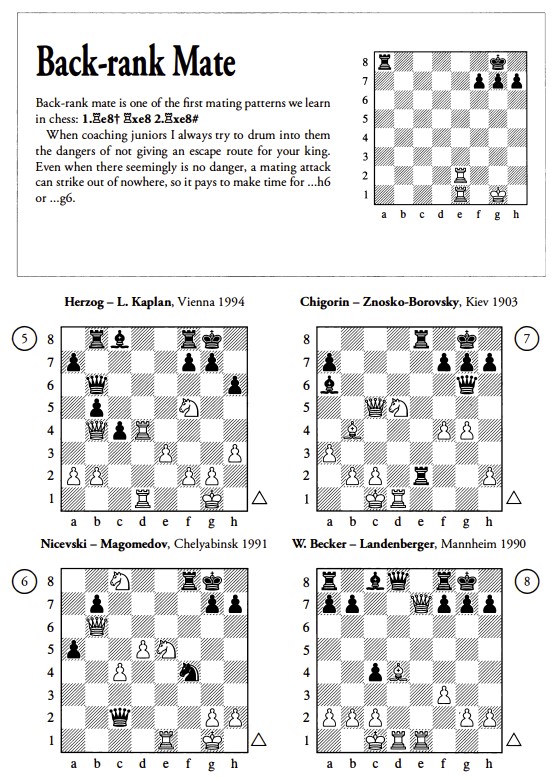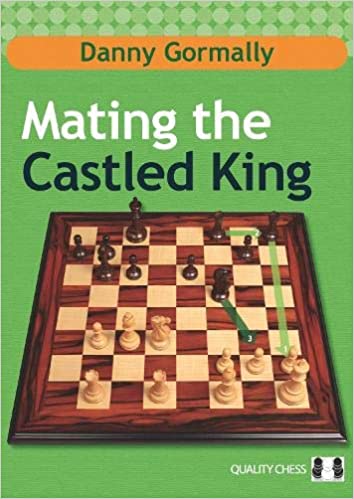Disclaimer 1: The following article contains several affiliate links to Amazon.com, meaning that if you go to Amazon and buy the recommended product (or some other product in an allotted period of time), the author of these lines will get a commission % from the purchase
Disclaimer 2: The following article is an excerpt from my article titled Best Chess Books 2022 in which I reviewed 20 chess books
Danny Gormally: Mating The Castled King
What is the book about?
As I mentioned earlier in my review of The Art of Attacking Chess, in 2022 I spent quite some time reading books on the topic of attacking and dynamics. Among other titles, another one I enjoyed this year is another Quality Chess book written by the British Grandmaster Danny Gormally and titled Mating The Castled King. Since I was already familiar with Danny’s work through my work on Chessable, 1 I was aware of his style and his gift for writing. Thus, when my coach also suggested I check this book, I gladly dived deep into it.
As its title suggests, the book heavily focuses on the topic of giving mate to the opponent’s king. After the first, introductory chapter, we dive straight into the largest chapter of the book, consisting of 160 examples where the goal is to deliver the checkmate to the enemy king.

The examples are divided into 20 subchapters, on the basis of different motifs/piece configurations and are presented in the exercise–solution form. At the beginning of each subchapter, the position diagrams are provided as puzzles – and only later in the chapter is each separate position discussed and analyzed. Even though the motifs (say, such as Greek Gift) are relatively well-known, the exercises are not always that trivial and I very much liked such a presentation, as it forced me to try and solve them before searching for the solution. 2

Now, if this was all there was to this book, I would have probably still regarded it quite highly, but I probably wouldn’t have included it on the list of the best books I read in 2022. However, Mating The Castled King is not only a checkmating but also very much an attacking manual. Because chapters 3-6, or more than half of the book, are devoted to attacking play. More precisely, to classical attacking techniques: attacking with the pieces and attacking with the pawns.
Apart from teaching us WHEN an attack with the pieces or the pawns should work, the author does his best to also explain WHAT the typical attacking methods are. The second half of the book has a very heavy emphasis on pattern recognition as the author writes in great detail about typical piece sacrifices, typical pawn breaks, methods of opening the enemy king in situations with opposite side castling, and much more.
Last but not least, the final chapter provides the reader with additional 12 exercises, prompting them to test the knowledge and check to which extent they have internalized the lessons from the earlier parts of the book.
Why do I love this book?
There are several reasons I am very fond of this book. First of all, I think Gormally is a very talented writer with an engaging writing style. Not only are his explanations elaborate and very thorough, but they are also accompanied by a healthy dose of self-deprecation and a dent of typical British irony, which appeals greatly to yours truly and makes the prose very enjoyable to read.
Secondly, I really like the book’s logical and crystal-clear structure and content. I think the author has found a very fundamental and instructive way of presenting material related to attacking chess. I think it is educational to have a section devoted to attacking patterns and then a section devoted to some attacking techniques. I think such a way of approaching the topic of attacking chess is quite didactic and very suitable for someone newer to the game.
That is not to say that the book is aimed at beginners or that it doesn’t have anything to offer to stronger players. Even in the section devoted to mating patterns, the puzzles provided are of varying difficulty – some of them I got instantly, while some of them presented a much greater challenge. None of them were as hardcore, as say, the puzzles in Aagard books, but they can definitely be regarded as too easy.
I would, therefore, not recommend the book to total beginners. 3 I would recommend it to someone who is not a complete beginner and who has potentially acquired some basic knowledge of mating patterns via a book like The Art of The Checkmate or The Checkmate Patterns Manual 4
Thus, if you are someone who fits this description, or someone who doesn’t care that much if the book is „NoT aBsOlUtElY sUiTaBlE fOr ThEiR lEvEl AnD oPtImAl FoR iMpRoVeMeNt“ and are just looking for a well-written, high-quality book, I can wholeheartedly recommend this one.
P.S. This book is also available on Chessable 5
- Where I worked on bringing his course Sharp Middlegames 2 to the platform
- Although I do admit this form of presentation might not appeal to someone newer to the whole „checkmate the king” business – in which case I can only recommend jumping straight to the solutions part.
- Although to be honest, I wouldn’t recommend any book on attacking chess to them
- Which is also available on Chessable, but I am linking to Amazon instead as Chessable doesn’t have the affiliate program yet!
- And I am linking to it even though they still don’t have the affiliate program up and running. REALLY, CHESSABLE?

